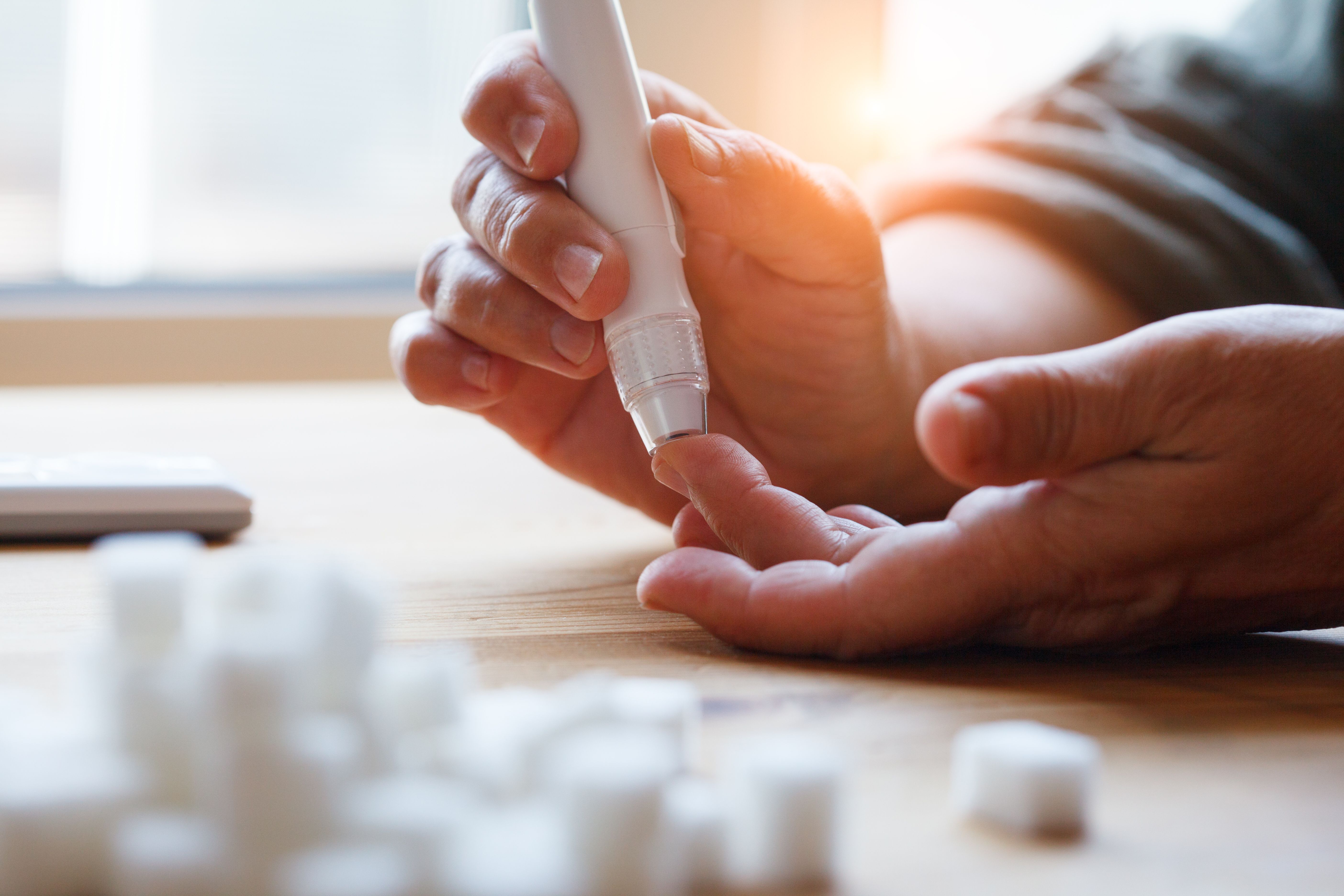Publication
Article
Pharmacy Times
Pharmacists Should Counsel Patients With Diabetes About Proper Pen Needle Selection and Usage
Author(s):
Key Takeaways
- Pharmacists are key in personalizing pen needle selection, considering factors like BMI and dexterity, to optimize drug delivery and patient comfort.
- Proper injection technique education by pharmacists, including hygiene and site rotation, is crucial for effective self-injection and patient empowerment.
Optimal glycemic control and medication delivery rely upon proper tools and techniques.
Despite the importance of correct pen needle selection and administration technique, many patients with diabetes struggle with these fundamental aspects of their injectable therapies. As accessible and trusted health care professionals, pharmacists are uniquely positioned to address this critical gap.
senior woman hands using lancet on finger at home to check blood sugar level, glucometer and sugar cubes on wooden table close up, diabetes concept, elderly health care, sunny morning - Image credit: zakalinka | stock.adobe.com

The diversity of pen needle options available, including variations in gauge, length, and bevel design, can be overwhelming for patients. Furthermore, individual patient factors such as body mass index, injection site selection, and dexterity significantly affect injection comfort and efficacy.1 A comprehensive patient assessment, therefore, is paramount. Pharmacists must be adept at evaluating these factors and translating them into personalized recommendations for pen needle selection. This tailored approach not only optimizes drug delivery but also minimizes patient discomfort and anxiety associated with injections, fostering greater adherence to prescribed regimens.
Beyond selection, proper injection technique is crucial. Pharmacists should provide clear, step-by-step demonstrations and hands-on training, emphasizing key aspects such as skin preparation, injection site rotation, proper needle insertion angle, and hygiene. Addressing common misconceptions and anxieties surrounding injections is also essential. By empowering patients with the knowledge and skills necessary for safe and effective self-injection, pharmacists play a pivotal role in ensuring optimal therapeutic outcomes and enhancing patient quality of life.
One common challenge pharmacists must address is pen needle reuse, which patients may do either because of lack of knowledge or as an attempt to save money. The practice of pen needle reuse poses significant risks to patient health and therapeutic efficacy. Repeated needle penetrations dull the tip, leading to increased pain and discomfort during subsequent injections. This blunting can also cause tissue trauma, potentially resulting in lipohypertrophy, a thickening of the subcutaneous tissue that can interfere with insulin absorption.2,3
Furthermore, reusing needles increases the risk of bacterial contamination, elevating the potential for localized infections and, in more severe cases, systemic complications. Additionally, residual medication within the needle lumen can crystallize or degrade, affecting the accuracy and consistency of dose delivery, ultimately hindering effective glycemic control. Therefore, emphasizing the importance of single-use pen needles is a critical component of comprehensive patient education.3
Pharmacists play a critical role in ensuring patients with diabetes achieve optimal outcomes with their injectable therapies. By providing comprehensive education and counseling on proper pen needle selection, injection techniques, and the risks associated with needle reuse, pharmacists empower patients to take control of their health. This proactive approach not only improves patient adherence and clinical outcomes but also reinforces the pharmacist’s position as an essential member of the patient’s health care team.
Ultimately, addressing the challenges surrounding pen needle usage requires a multifaceted approach. Pharmacists must stay informed about the latest advancements in pen needle technology and best practices in patient education. By collaborating with other health care providers and using available resources, pharmacists can effectively bridge the gap between prescribed therapy and optimal patient outcomes. This commitment to patient education and support will lead to improved quality of life for individuals with diabetes relying on injectable medications.
REFERENCES
1. Praestmark KA, Jensen ML, Madsen NB, Kildegaard J, Stallknecht BM. Pen needle design influences ease of insertion, pain, and skin trauma in subjects with type 2 diabetes. BMJ Open Diabetes Res Care. 2016;4(1):e000266.doi:10.1136/bmjdrc-2016-000266
2. Lipohypertrophy. Cleveland Clinic. Updated April 29, 2022. Accessed February 26, 2025. https://my.clevelandclinic.org/health/diseases/22928-lipohypertrophy
3. Lupton L, Sun X, Javadi P, et al. Pen needle use patterns in an insured population with diabetes: US retrospective claims analysis. J Am Pharm Assoc(2003). 2024;64(4):102124. doi:10.1016/j.japh.2024.102124






